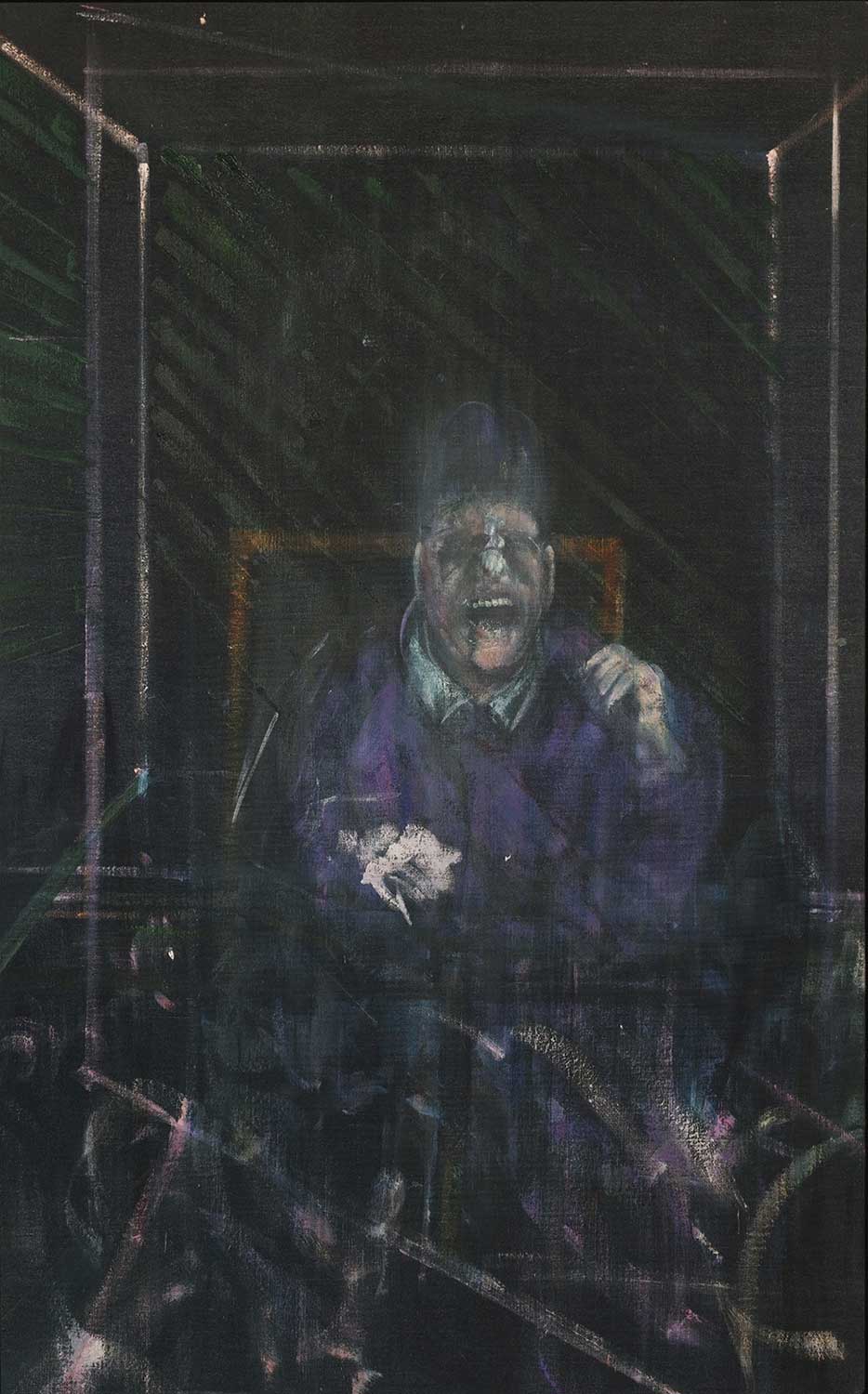Why did Francis Bacon obsessively revisit the theme of the pope in his paintings? A bold statement lies in the fact that for over two decades, Bacon's artistic journey was deeply intertwined with reimagining Diego Velázquez's iconic portrait of Pope Innocent X. This relentless exploration not only defined Bacon's career but also left an indelible mark on modern art history.
Bacon's fascination with the pope began while he was in the South of France, where he started experimenting with variations on Velázquez's masterpiece. His work evolved significantly during this period, culminating in numerous renditions that captured the essence of despair and solitude. The artist's unique style brought forth a series of visceral portraits, each more haunting than the last. These works resonated with audiences globally, establishing Bacon as one of the foremost figures in contemporary art.
| Bio Data & Personal Information | Career & Professional Information |
|---|---|
| Name: Francis Bacon | Artistic Movement: Modern Art |
| Date of Birth: October 28, 1909 | Notable Works: Study after Velázquez's Portrait of Pope Innocent X (1953) |
| Date of Death: April 28, 1992 | Influences: Diego Velázquez, Expressionism |
| Place of Birth: Dublin, Ireland | Awards: Elected Royal Academician (1959) |
| Education: Self-taught artist | Reference: Tate Museum Profile |
Bacon's most recognizable image remains the screaming pope from Study after Velázquez's Portrait of Pope Innocent X. This piece exemplifies his ability to transform historical portraiture into something unsettling yet captivating. The original Velázquez painting depicted Pope Innocent X with regal authority; however, under Bacon's brush, the figure becomes distorted—a reflection of inner turmoil rather than external power. Critics have speculated that this transformation symbolizes universal human suffering or existential dread.
Throughout the 1950s and early 1960s, Bacon created approximately fifty variations on this theme. Each iteration explored different aspects of psychological distress, often incorporating elements such as vibrant colors and abstract forms. One notable example is Study for a Red Pope, Second Version, completed in 1971. This particular work marked the culmination of Bacon's long-standing engagement with the subject matter.
Art historians agree that Bacon's reinterpretation of Velázquez's portrait represents more than mere homage. Instead, it serves as commentary on humanity's condition amidst post-war anxieties. By isolating his subjects within claustrophobic spaces, Bacon emphasized feelings of alienation and vulnerability. Furthermore, his use of bold lines and dramatic lighting heightened the emotional intensity of each composition.
In addition to technical innovation, Bacon's approach to content challenged traditional notions of beauty and representation. Unlike many artists who sought to idealize their subjects, Bacon embraced imperfection and raw emotion. As a result, his works evoke powerful reactions from viewers, forcing them to confront uncomfortable truths about themselves and society.
While some critics initially dismissed Bacon's style as grotesque or overly theatrical, time has proven otherwise. Today, his contributions to modern art are widely celebrated, particularly regarding how he expanded the boundaries of portraiture. His willingness to experiment with unconventional techniques paved the way for future generations of artists seeking new ways to express complex ideas visually.
For those unfamiliar with Bacon's oeuvre, understanding its significance requires delving deeper into both personal influences and broader cultural contexts. Born in Dublin, Ireland, Bacon grew up surrounded by conflict and uncertainty—experiences that undoubtedly shaped his worldview. Although largely self-taught, he absorbed lessons from various sources, including literature, film, and photography.
His decision to focus on papal imagery can be seen as part of a larger investigation into themes of authority, corruption, and morality. In choosing to depict figures traditionally associated with holiness and righteousness, Bacon subverted expectations, revealing instead layers of complexity beneath surface appearances. Through this lens, his work becomes less about religion per se and more about exploring fundamental questions related to identity and truth.
Despite achieving international acclaim later in life, Bacon remained committed to pushing artistic boundaries until his death in 1992. His legacy endures through exhibitions worldwide, scholarly publications, and continued interest among collectors and enthusiasts alike. For anyone intrigued by the intersection of history, psychology, and visual arts, studying Francis Bacon offers invaluable insights into what makes great art truly timeless.
As we examine Study After Velázquez (1950), another key piece in Bacon's repertoire, several defining characteristics emerge. Firstly, the full-length depiction of the pope contrasts sharply with earlier studies focusing solely on facial expressions. Secondly, vertical folds surrounding the central figure create an almost cage-like effect, further emphasizing entrapment and isolation. Lastly, subtle shifts in color palette contribute to an overall sense of unease, drawing viewers inexorably toward the heart of the artwork.
This specific painting belongs to Bacon's extended series inspired by Velázquez's original masterpiece. Following Head VI, it marks the second installment in this ambitious project, showcasing evolving skills and conceptual depth. While maintaining fidelity to source material, Bacon infused each creation with distinctive flair, ensuring no two interpretations felt identical despite sharing common roots.
Finally, turning our attention to resources available today, scholars benefit immensely from comprehensive catalogs like Francis Bacon: Catalogue Raisonné compiled by Martin Harrison and Rebecca Daniels. Such documents provide detailed analyses alongside high-quality reproductions, enabling accurate assessments of individual pieces within broader frameworks. They also clarify methodologies employed throughout research processes, fostering greater transparency and trustworthiness within academic circles.



